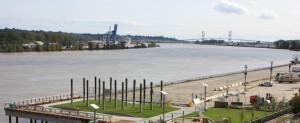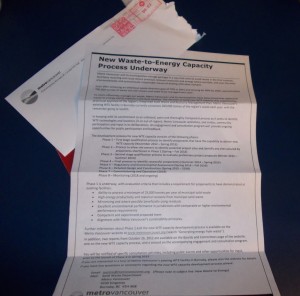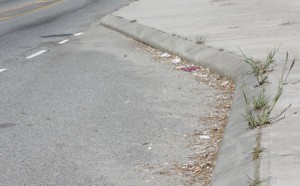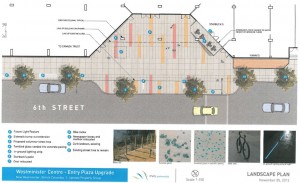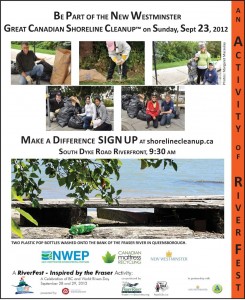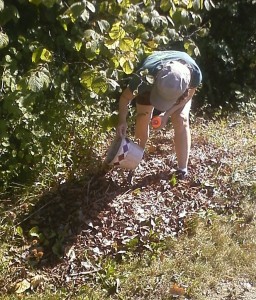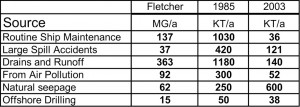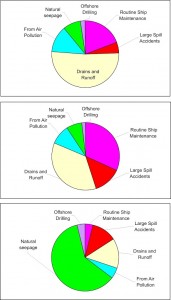I have a sneaking suspicion I might be very bad at politics.
I just don’t see the issue with the coal terminal proposal in Surrey. Worse: I see a big issue with the coal terminal proposal in Surrey but I don’t see that issue being meaningfully addressed in the current debate about the coal terminal proposal in Surrey, because I seem to care about the one issue few others seem to be concerned about.
For those who don’t leaf through the back pages of the Record or the NewsLeader, or don’t spend their evenings reading through reams of the reports attached to Council minutes (…which makes me curious about why such a person would be reading this… ehrm… Hi Mom!), the story thus far is thus:
Right across the river from New Westminster are Fraser Surrey Docks, you can see the ships and large blue cranes operating from the Quayside boardwalk. They move containers, logs, bulk agricultural products, steel, and assorted cargo on and off of boats and on and off of trucks and trains. Now they want to move coal off of trains onto barges. And apparently, some people are concerned about this for a variety of wrong reasons.
There is a lot of info about this proposed operation available here , including maps, diagrams, and the answers to most of the questions you might have. This will not be a situation like the Delta Port or Neptune Terminals in North Van, where there are large piles of coal being shuffled around. The plan is to move the coal directly from the trains to the barge, and ship it to a deep-sea transfer facility up on Texada Island, then to China. The on-site stockpile will (it appears) be small, and be under one of those big plastic Quonset hut style shelters.
From the looks of the Council Report and the newspaper stories, the local and regional concerns can be summed up as: the health effects of coal dust; increased diesel emissions from boats and trains; the risk related to coal spills into the river; and the general noise and view impacts for Quayside residents.
Most of these issues seem well addressed by the application. The plan is to do all the coal movement with covered conveyors and to use dust abatement measures that are industry practice in urbanized areas. These measures are notably more stringent than those currently used for the bulk agricultural products they move now- that yellow dust sometimes visible from the New West side of the river. Also, this new coal transfer activity will take place at the west end of the terminal, more across from the gi-normous Annacis Island Car Terminal where they unload thousands of cars from those gi-normous car carrier ships than across from the Quayside. The barges, during loading, will be more than 2 km downstream from the Quayside residents who have expressed the most vocal alarm about the project.
The risk of significant spill from the dock or the barges is small, but obviously not nil. That said, compared to moving many other cargoes (especially liquid fuels), coal is relatively stable and fairly easy to contain and clean up in the event of a spill. It would be a very bad day for the salmon in the river if that happened, no doubt, so there is some area to explore here for the local municipalities and agencies like FREMP, clearly an area for more discussion.
The elephant in the room, however, is hardly mentioned in these discussions. According to the Council Report, this coal facility is being planned to move up to 8 Million Tonnes of coal a year that (when burned) will generate about 48 Million Tonnes of CO2 annually. To put this in perspective the same Council meeting had a presentation on the City’s Community Energy and Emission Plan, which would see New Westminster’s 82,000 residents in the year 2030 producing less that 240,000 Tonnes of CO2 annually.
Not to put too fine a point on it: if both of these plans see the light of day this single port terminal will be directly responsible for 200 times the greenhouse gas emissions of the entire community of New Westminster!
So all of our energy conservation actions in the City, all of our appropriate, responsible, intelligent changes we are taking in the City – the sacrifices we are facing, investments we are making, even a few hard choices we may need to take, for all the right economic, ethical, and environmental reasons, will be meaningless in light of the impacts of that coal terminal.
This all arrived at the same time that this month’s Walrus Magazine arrived in my mailbox, with a remarkable piece written by New Westminster’s own Dr. Marc Jaccard that talks about his personal arc from academic to IPCC member to policy adviser to Stephen Harper’s minority government to Nobel Prize winner to being placed in the back of a paddy wagon by the RCMP for protesting the movement of coal through Canada’s ports. It is a great read, as Dr. Jaccard asks himself (and causes us to ask ourselves) what he was doing about the single most important environmental issue of our generation. This from a guy who has dedicated his life to studying the problem, understanding the science and the economics, and bent the ear of some of the most powerful people in the world. Yet in the end, he felt he was not doing enough, and direct action was the only way he was going to be able to live with himself, or answer to his grandchildren for what we are doing now.
Yeah, I am contradicting myself again. I recently complained that unsustainable shark harvesting as not really being a City issue. This is not strictly a municipal issue, and the Port seems to think the “big issue” of Climate Change impacts is not even Port jurisdiction. This issue, I think, its too important for every single jurisdiction to not take it on. A 450ppm world will not be comfortable for those people living on the Quayside.
The Port is wrong. They are profiting in the trade of a commodity that is causing global catastrophe It is killing people, and they are part of that supply chain that supports that. For them to say “Hey, we just move the stuff, not up to us to question what we move – none of our business!” is morally bankrupt. We don’t burn Coal in BC, for good reasons, but we are comfortable exporting it to places that do. How is this different than our unethical asbestos trade?
Much more than a few people concerned about how the noise of an operating port 2 km from their waterfront home will impact their property values, I think we need to be asking ourselves why we are supporting the rapid extraction and combustion of coal in the year 2012? And if burning that coal is OK with us, if folks profiting from its burning is OK with us, if the biggest concerns we have about this is the noise of distant conveyors or dust on the horizon, why the fuck are we even bothering with a Community Energy and Emission Plan!?
Sorry for the potty mouth, Mom, but it had to be said.
